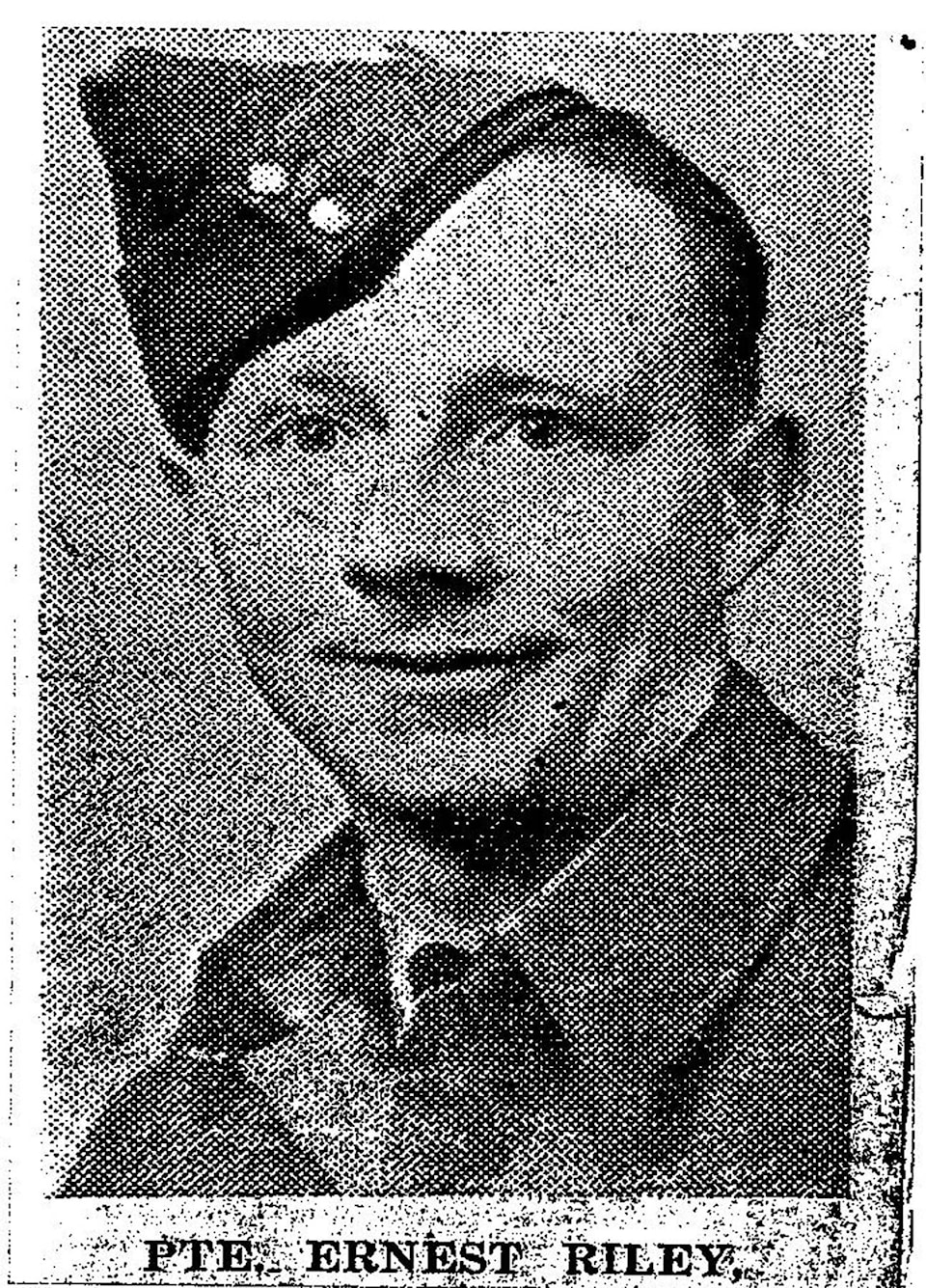By Maddi S., Jocelyn W., and Nicholas M.
Courtesy of Ponoka Secondary Campus
Ernest Albert Riley was born on Jan. 10, 1915, to parents Albert and Pauline Riley in Lacombe. The family soon moved to Strathcona, and later Myrth. He attended Meadowbrook public school in Strathcona until Grade 6.
As an adult, he stood at 5’ 6” and weighed 250 lbs and had short brown hair and blue eyes.
He began working as a farm labourer at 15 years old and continued to do so for 12 years. He also employed himself as a truck driver, which he worked for six years. Ernest never married and had no children.
When he was 27 years old, his life changed forever.
In Canada, the draft, originally the National Resources Mobilization Act, was mean to protect the homeland, and the soldiers were not to see any battles. Which in Ernest’s case is exactly what happened. Ernest Albert Riley wasn’t an ordinary soldier.
He was drafted into WWII as an NRMA soldier which are often referred to as “zombies” at the time and were meant to be training for only home defence, meaning they would not leave Canada. NRMA, standing for National Resources Mobilization Ac was the ac that prohibited “zombies” from being sent overseas. The act was altered in 1942 and NRMA soldiers began being sent overseas. When he was drafted into the war at age 27 on Dec. 1. 1942, and spent it with the Prince of Wales Rangers as a private until April 13, 1944.
During his time with the Rangers, he never saw the dawn of battle.
This is when he made a life-altering decision: to enlist as a soldier. He no longer wanted to be a zombie.
He then spent 125 days with the Royal Hamilton Light Infantry.
The regiment started out in the United Kingdom from May 26, 1944 to June 13, 1944, before moving out to Normandy on June 14, 1944 until Aug. 16, 1944.
On August 15, the Royal Hamilton was given the order to move to Fontaine-le-Pinadn. At 1400 hours they arrived and moved into positions. As digging they were digging trenches they came under enemy fire from a six barrel Nebelwerfer mortar gun, suffering six casualties.
In these six casualties, we speculate that Ernest Albert Riley lost his life on that fateful day. He was posthumously awarded the CVSM, Canadian Volunteer Service Medal and the France and Germany star. He was buried in Bretteville-Sur-Laize, plot 19, row C, grave 15. The grave inscription reads, “When the morning dawns we will meet again.”
He left behind his parents and three siblings.
Ernest walked the same streets that we do and may have even known our relatives. When he made the decision to enlist, he made one of the greatest sacrifices a man could make. This brave and selfless decision cost Ernest his life, but he lost it in an honourable way. He was not far from our town which means he should be remembered just the same as any boy from Ponoka. Lest We Forget.
